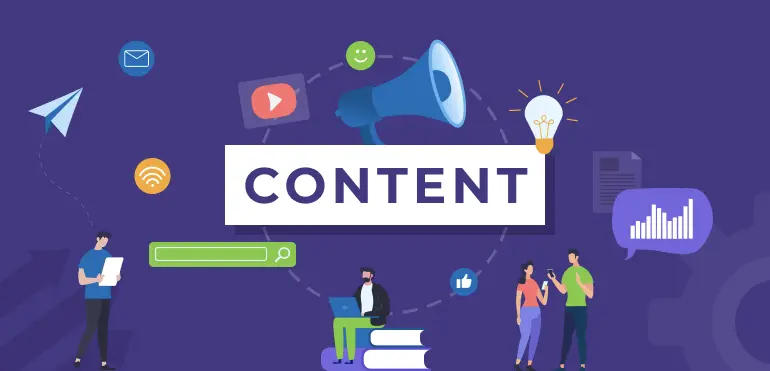Making use of customer feedback for product fixes, updates, and feature launches is a natural part of a good product’s lifecycle.
It’s all part of an increasing trend of higher personalization we’re seeing across multiple verticals, with 69% of business leaders investing more in personalized experiences even amidst an economic downturn (2023 State of Personalization).
That goes to show how much value there is in tailored customer experiences.
But budgets are freezing across the board. The fact of the matter is most CS leaders need concrete ways to stick to their budget while delivering on those personalized experiences. And therein lies the disconnect we’re trying to solve today.
In what follows, I’ll go through:
- A few considerations on why customer needs should be prioritized when deciding on product updates.
- How to prioritize customer needs. Sifting through customer feedback to find actually valuable suggestions and future requests can be tiring. We’ll see if there’s a better way (or several) to do that.
- We’ll then get real in the end with a roundup from a few top CS and Product professionals sharing their insights into how they prioritize customer needs.
Time to dive in!
Why Should I Prioritize Customer Needs?
We live in an age where everything is personalized. From everything on your phone to your supermarket order, it seems every facet of online life is now populated with algorithms that understand our preferences, record them, and then serve us tailored experiences.
There have been so many advances in this area that it’s become the norm, rather than the exception, to offer personalized CX. So much so that younger generations now have a negative reaction to impersonal CX: “49% of Gen Z say they’re less likely to make a purchase and 27% say they’ll stop shopping with the brand” (also from the 2023 State of Personalization). Pair that with the recent AI boom and we’re going to see this trend continue at an unprecedented, exponential scale. As such, customer needs will become more and more important, not just to boost your bottom line and drive ROI, but to stay relevant as a SaaS in this highly competitive market.
So why should you prioritize customer needs? The better question is, why aren’t you already?
Prioritizing can also have two meanings, however. Beyond putting customer needs ahead of your own, it also implies prioritizing those needs in relation to one another. So follow along as we break down some varied approaches to prioritizing customers’ desires:
How to Prioritize Customer Needs?
1. Use a priority matrix that works for your needs
The simplest way to start is with a priority matrix. You can use the one we’ve prepared below or come up with your own variation matching your needs.
A priority matrix for customer needs should allow you to do a first pass on organizing customer requests, sorting the most important ones from the ones that don’t help in any way.
Furthermore, through a matrix, you can gauge the relative impact of customer requests on your product and business. Regardless of whether you agree with them or not, a high-impact need should be taken seriously since ignoring that request will lead to dissatisfaction and increase churn likelihood.
That doesn’t mean you have to do every high-impact request from your customers – you simply have to address their concerns and make them feel seen and validated while working with them towards a solution.
Prioritization matrix template. Make a list of all customer requests and needs then sort them based on impact and urgency. After sorting, you can list them by priority starting with the top left (high priority – high urgency) and ending with the bottom right (low urgency, no impact).
2. Go for the classic First In First Out (FIFO) tactic
When you’re just starting out your SaaS, FIFO is the ideal placeholder method as you’re building out a well-defined strategy. Your initial customer needs will come slowly and gradually, allowing you the time to focus on each individual request and get it done in order without sacrificing your budget.
Simply moving through customer requests one by one is the traditional customer support approach, but not the ideal version. There’s one big advantage to First-In-First-Out, and that’s the timely handling of customer requests. However, there are many disadvantages to using FIFO long term:
- You’re not evaluating requests based on their quality and urgency.
- You’re not factoring in account size or customer business fit.
- You might ignore critical requests in favor of mundane ones.
- You’re not considering overall business goals when dealing with requests.
- You might be on track for burnout as the customer base grows and needs pile on.
3. Use the Cost-to-Impact Ratio
A common tactic among CSMs is to look at the cost-to-impact ratio (aka the benefit-cost ratio or BCR) for each customer need.

To calculate BCR, you must assign a present value (aka cash value) to the benefits and the execution of that request. You now have the potential ROI and costs for it. Divide the ROI, or cash benefits, by the total costs – the number you end up with should tell you whether it’s fiscally sound to prioritize that customer need:
- If the result is < 1 – the costs outweigh the benefits, you should not handle this proposal.
- If the result is 1 – the costs match the benefits, see how you can reduce costs or increase benefits to make this financially viable.
- If the result is > 1 – the benefits outweigh the costs, meaning you’re free to start on this proposal, provided you get approvals from your peers.
While slightly complex, this method works great when your team has to decide whether to commit to specific high-cost, high-impact customer needs, allowing you to avoid potentially damaging budgeting decisions. It can be easy to use this method on the fly, too, as experienced CSMs can easily estimate what a customer’s need will cost vs. what it will bring in in terms of ROI.
To adequately estimate the costs however, remember to also look at:
- Time to fix. The time it takes to fix a bug might take over someone’s workflow, and that has complex cost implications.
- Effort to fix. How difficult the fix is will determine how many resources you need to allocate and the time to fix for each member of your team.
- Resources required to fix. How many team members will be working on this? Do they require specialized tools or is it a quick fix?
4. Use automation to sift through the mountains of feedback
Customer success automation has become increasingly advanced – as evidenced by how many options you have for actions, triggers, and more in our own CS automation playbooks. So now you can leverage automation to quickly sift through mountains of customer feedback to find the nuggets of gold that will help improve your product or services.
There are multiple specific ways automation can help by:
- Automatically sorting feedback based on account specifics. Maybe you only want to implement feedback from your largest accounts, or maybe you’re looking for the best customer fit (in which case you’d go for clients with top-performing health scores).
- Send onboarding feedback directly to the CSM so they step in. Customer service issues during the onboarding phase can often be severe and lead to more complex issues throughout the customer journey. So it’s vital to step in and solve the issues as soon as possible.
- Automatically favor paid users vs trial users. Depending on your business model, paid users may be far more important than trial users. Fortunately, automation also allows you to filter feedback based on subscription types.
- Prioritize accounts close to renewal. It might also be worth prioritizing the needs of customers whose subscription is about to expire. By taking care of their needs and offering support in this critical decision-making stage, you can ensure they renew. Doing this at scale through automation can also drastically improve your retention rate.
- Filtering feedback based on keywords. While this may take a bit of experimentation, you can arrive at a formula that allows you to sort feedback automatically. To start, you can filter urgent customer needs and set automated notifications to their assigned CSM.
5. Manually prioritize your top accounts and your best-fit accounts
For some SaaS, their business model might allow for a more scalable process – i.e., feedback that, when implemented, will benefit the entire customer base.
To obtain this kind of feedback, consider holding very-high-touch meetings with your best-fit customers or your largest accounts (your call) and obtain detailed feedback from them. Consider asking:
- How is your product functioning?
- How is it helping them achieve their set goals?
- How are your CSMs helping them move in that direction?
- What kind of features would they like to see in the product?
- What other kind of feedback do they have for both you and your product?
Then, when prioritizing the suggestions you receive (use the matrix above 😉), consider how useful they are at scale for your entire customer base – if something works well at scale, bump it up on your list.
6. Use rigorous filters to decide which feedback is most important
Of course, CSMs are more than welcome to put their Excel skills to good use. You can add all the support requests you receive to a giant excel sheet and use extensive filters to pick the most relevant ones.
One suggestion is to divide them into categories: product feedback, feature requests, support issues, or bugs.
Naturally, you can make your life easier by doing an initial pass using a CS software such as Custify to automatically sort customer needs and divide them by account specifics. Our advanced reporting and analytics feature is the perfect way to get started.
7. Work closely with Product to find a workable, long-term process
Product people want to know what to prioritize, too, so they should be more than willing to help you come up with a workable process. Ideally, you should create a voice of the customer program that includes your top customer needs going to the Product team. Your role as a CSM must be to set priorities, facilitate implementation, and ensure it’s in accordance with what customers actually want.
One common point of contention at this stage lies in counterintuitive & poorly-worded feature requests – often originating from customers not being able to accurately express what they want. When that happens, you as a CSM must put your experience to work and intuit what customers truly want, and then translate the feedback into actionable points for the Product Manager.
8. Use the right tools to keep track of metrics, health scores, and tasks
A proper customer success platform, paired with complex integrations between your entire tech stack, will allow you to correctly serve customer needs in an order that makes sense for your business without leaving customers out to dry.
In a recent webinar, Stijn Smet, Team Lead Customer Success @Whale, touched on how important the right tools are to ensure peace of mind when you’re the CSM for upwards of 250 clients:
I would say my game plan is mapping out and being very data-driven. There is a lot of nuance to it but data-driven is really, really my key point right now. I wasn’t very good in the beginning of my career at like identifying KPIs, identifying metrics, health scores, NPS interpreting, but that is really now very helpful. Like the thing is – we’re growing and scaling – I can’t handle a book of business of 250 clients. Going over them, picking them up one by one, analyzing the feature. You need something like a tool that is really focused on that data-driven, on that analytical part where you can really build in notifications, where you can really build in those digital touchpoints towards your clients but also towards yourself. To really already have those red flags, green flags, upsell opportunities, churn risks being flagged to you which makes it then easier to really work on a digital way but also makes it easier for you and your team to:
- Not be burned out at the end of the day.
- Really build out those proactive customer outreach programs. Those programs notify you that a client is going to churn, that a customer is ready to upsell.
So again – really being a data-driven person. Analyzing those key feature data points. But also, again, having a tool that really gives you that peace of mind.
Examples of how top CS & Product leaders balance customer needs and budgets
Before anything else, let’s review a true Product person’s perspective on this by watching Dan Olsen’s talk on just this topic at the 2022 Mind the Product conference in San Francisco:
1. Using the Cost-to-Impact Ratio

It’s a complex equation that is going to vary by company and product, but in a trade-off situation I always lean toward the cost-to-impact ratio. Said another way, if you only get one product feature request to work on, show the math and figure out the total ARR or total population of customers that you can influence. CSMs should go beyond the argument that “my customer really needs this” and seek to quantify the impact of “what happens if they don’t get it”.
Also, CSMs can unite together to jointly propose the top requests as a department on a regular basis (and bonus points for including other post-sales teams like Support) to provide a prioritized list. This requires some upfront effort to come to a consensus, but eliminates a lot of burden on the product team to do the analysis.
One more actionable piece of advice for the CSMs: invite the decision maker in product to the next EBR with the needy customer. Hearing it from the customer and connecting the request to their business needs can be more effective than your advocacy on their behalf.

Kristine Kukich, Senior Director of Customer Marketing at Thought Industries, also mentions cost-to-impact, but used in a way that gives customers a bit more liberty for ideation:
I’m toying with the idea of using the ideation from our customers to create a list for the CSMs to curate to see if their take on what customers need is the same as what the customers themselves are asking for, then cost-to-impact, and that should really help prioritize the list.
2. Breaking Down Feedback into Components and Sorting It

Parul Vij Chopra, Head of Customer Success at AVATOUR, thinks CSMs should do the extra work of breaking down feedback based on customer expectations, impact and ROI:
Customer feedback is a valuable resource for the entire organization. However, it’s essential to recognize that the way a Customer Success Manager (CSM) interprets feedback may differ from the Product team’s perspective. CSMs should go the extra mile to break down feedback into three key components:
First, identify the feedback itself.
Second, understand the customer’s expectations.
Third, assess the potential impact on the customer’s workflow and the possibility of a measurable ROI.
This should then be communicated with the Product team, along with information on the customer’s usage and overall health to help the Product team identify any urgent issues that require attention and should be included in the Product roadmap.

Relating Customer-delivered value to ARR Growth, Churn, New business ARR has not been figured out yet because so few companies use Value engineering to build those KPIs and returns that should be expected. If this was standard practice, then it would be about handing this to CS and having the success plans deliver on what value engineering used to sell and secure budget presales.
Imagine if quantifiable business outcome and ROI was central to the Post Sales experience, you’d get the following:
Product requests are qualified by the impact on delivering on the ROI expected, yes, you can push back! Product are also building a product based on delivering value rather than ‘chasing a TAM’.
A product built on delivering ROI completely changes the technical win in the presales stage as the differentiator is demoing a set of configurations which deliver ‘X ROI’. Can the competitors show this? or are they still talking feature / function?
Value delivered can be fed back into marketing to refine the ICP.Imagine starting a conversation with ‘Is this the value you are currently getting from your system?’ rather than ‘Do you have an active project to replace your current system?’ The first statement has the potential to expand the TAM.
What I have outlined is really a vision. The simple start you can make with no cost would be as follows:
1. Categorise the value you capture into the following categories:
V1 – User value (anecdotal and unquantified) for instance ‘Custify make my job easier, Custify saves me time.
V2 – Manager / Operational value. Example: “Custify helps us reduce our onboarding churn by 20%”
V3 – CXO ROI Value: Example: “the overall reduction in churn caused NRR to move from 110% to 120%, which contributed to an increase in our share price.”
2. Take customer feedback for Product & put it into the appropriate categories (V1, V2, or V3). That way Product can see the customer value impact the suggestions are making.
3. Using Behavioral Segmentation

Muhammad Saad Khalid, Data Specialist at MarketLytics, thinks behavioral segmentation is the best way of focusing on the customers that are truly the ones driving value for the business:
I go for a behavioral segmentation because I have seen that people who spend more time using your product or service are the customers / users whose opinion matters and are the ones who generally contribute to higher CLV and/or ARR.
4. Promoting Full CS <> Product Alignment

I’ve seen great results when CS is fully aligned in the approach with the Product team. It helps to understand the Product perspective. Product teams are constantly looking for their product niche so they care about existing and potential customers. This means that they need to rely on their market research but also on the sales and CS user feedback. The way Product interprets feedback is different from the way CS does. I’m not a Product expert but I’ve worked closely with Product teams throughout the years.
As a CS leader, one of the first things I want to establish is alignment with the Product team. I want to understand their process for designing their roadmap, the type of feedback they find useful and their bandwidth in terms of resources. It’s important to ensure the Product team that the feedback coming from CS does not intend to sidetrack their roadmap or step on their toes.
I’ve found it very effective when there are two types of feedback. One being the quantitative day-to-day feedback and the other one being the qualitative feedback. The quantitative can be used across all the customer-facing roles (support, sales, CS) and it is a more transactional type of feedback, where you log it once feedback comes in. Usually, the Product team will develop an algorithm based on their weighted priorities to help them get the feedback they need towards their roadmap. While this feedback clearly measures the frequency of a feature request it can also include the impact in terms of how necessary it is for the customer (nice to have, need, will churn).
The qualitative feedback is definitely more emotional coming from the CSMs experience. This feedback can happen once a quarter and can be a brainstorming whiteboard sort of exercise. I’ve found it helpful to also include someone from the Product team in those meetings so they can ask clarifying questions and get more context. In this exercise, I pull the top feature from the Product’s roadmap and ask the CSMs to rank them based on impact and frequency. This is important additional feedback to the Product team because it gives them feedback from those customers who are most engaged with the company (they speak with the CSMs). The impact here carries more weight because it comes from engaged or high-value customers and because it usually resonates with the CSMs who see the product from the lenses of the customer.
This process ensures internal alignment that can result in actionable solutions (professional services, adjustments on the Product roadmap, etc) and steers away from budget conflicts.
What’s Your Priority?
Regardless of which approach you land on, one thing’s certain and that’s the value of personalization in SaaS. Prioritizing customer needs therefore seems like the obvious future-proof tactic to keep your CX in line with market trends moving forward.
Therefore, establishing a process to prioritize customer needs is well worth the time and effort spent on it and might compound your ROI as audience needs evolve towards more custom experiences.
For more in-depth CS guides with varied perspectives, such as this one, keep following the Custify blog.





